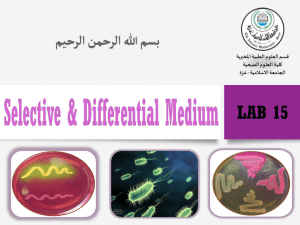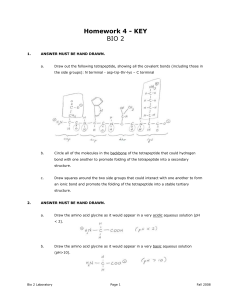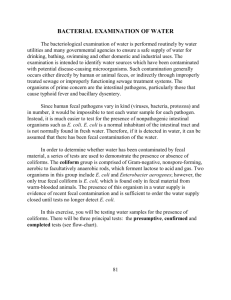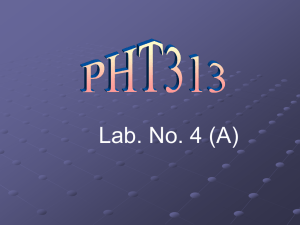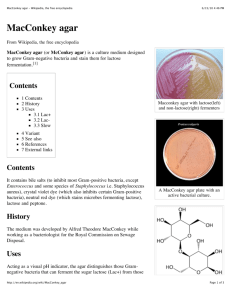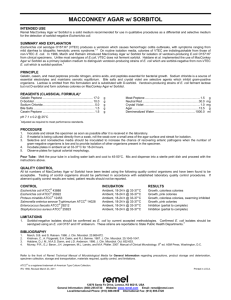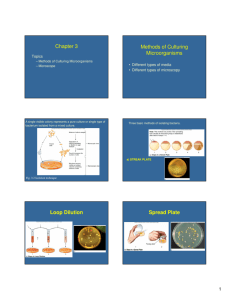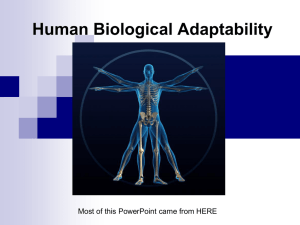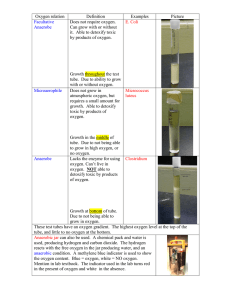SELECTIVE, DIFFERENTIAL AND ENRICHED MEDIA
advertisement
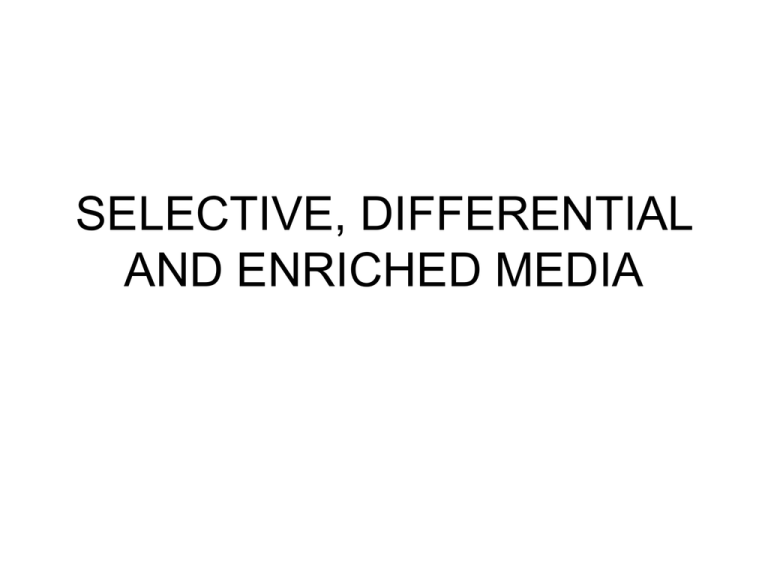
SELECTIVE, DIFFERENTIAL AND ENRICHED MEDIA • Selective media: used to select (isolate) specific groups of bacteria; • chemical substances in the media inhibit the growth of one type of bacteria while permitting growth of another (MSA, EMB, MacConkey) • Differential media: distinguishes among morphologically and biochemically related groups of organisms; • chemical compounds (following inoculation and incubation) produce a characteristic change in the appearance of bacterial growth and/or the medium surrounding the colonies (MSA, EMB, MacConkey) • Enriched media: supplemented with highly nutritious materials, such as blood, serum, or yeast extracts, for the cultivation of fastidious organisms Mannitol Salt Agar (MSA) • Mannitol salt agar is both selective and differential • Selective: It favors organisms capable of tolerating high salt concentrations (7.5 % NaCl) • Differential: It distinguishes bacteria based on their ability to ferment mannitol • Differentiates Staphylococcus species, by mannitol fermentation • (S. aureus ferments, S. epidermidis does not) • Phenol red is the pH indicator Neutral - Basic pH red at 7.4 to 8.4 Acidic pH yellow below 6.8 RESULTS: • Positive Results: The development of “yellow halos” around the bacterial growth means mannitol has been fermented and acid end products have been produced (S. aureus) • Negative Results: No color change in the medium is a negative result (S. epidermidis) • No growth on the medium indicates a Gramorganism (E. coli) PROCEDURE: On an MSA Plate: S. aureus (growth, yellow) E.coli S.epidermidis (No growth) (growth, red) Eosin Methylene Blue Agar (EMB) • Eosin methylene blue agar is a selective and differential medium • Selective: EMB contains the dyes methylene blue and eosin which inhibit Gram + bacteria, thus favoring growth of Gram – • Differential: EMB contains lactose, thus allowing for the distinction between lactose fermenters and nonferments Typically used for the family Enterobacteriaceae— enteric (gut) bacteria (Gramrods) They may be divided into those that produce acid from lactose fermentation (coliforms) and those that do not Coliforms include Escherichia coli and Enterobacter aerogenes Results • Large amounts of acid from lactose fermentation cause the dyes to precipitate on the colony surface, producing a black center or a “green metallic sheen” (E. coli) • Smaller amounts of acid production result in pink coloration of the growth (E. aerogenes) • Nonfermenting enterics do not produce acid so their colonies remain colorless or take on the color of the media (P. vulgaris) • No growth indicates a Gram + organism (S.aureus) •Large amounts of acid from lactose fermentation cause the dyes to precipitate on the colony surface, producing a black center or a “green metallic sheen” (E. coli) PROCEDURE: On an EMB Plate: P. vulgaris S. aureus (growth, (no growth) no color) E. aerogenes black colonies or green metallic sheen E.coli black colonies or green metallic sheen MacConkey Agar (MAC) • A selective and differential medium used to isolate members of the Enterobacteriaceae • Contains nutrients, including lactose, as well as bile salts, neutral red and crystal violet • Bile salts and crystal violet inhibit growth of G+ organisms (selective) • Neutral red is a pH indicator that is colorless, but yellow above pH 8 and red at pH less than 6.8 (differential) • Acid accumulating from lactose fermentation turns the colorless neutral red to a red color— therefore coliforms produce a red “halo” on the medium (E.coli, E.aerogenes) • Lactose nonfermenters will grow, but don’t produce acid. Therefore, the neutral red remains colorless (P. vulgaris) • No growth indicates a Gram + organism (S.aureus) Macconkey agar with lactose(left) and non-lactose(right) fermenters PROCEDURE: • On a MacConkey Agar Plate: P.vulgaris (colorless) E.aerogenes (Red) S.aureus (no growth) E.coli (Red)

